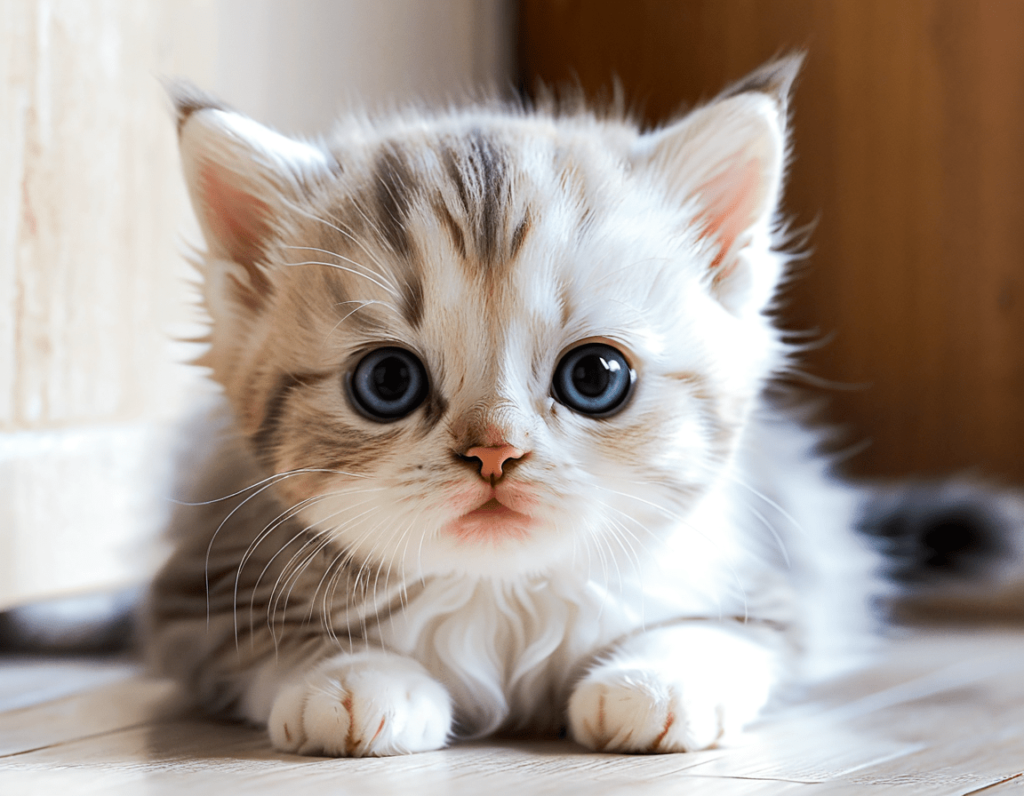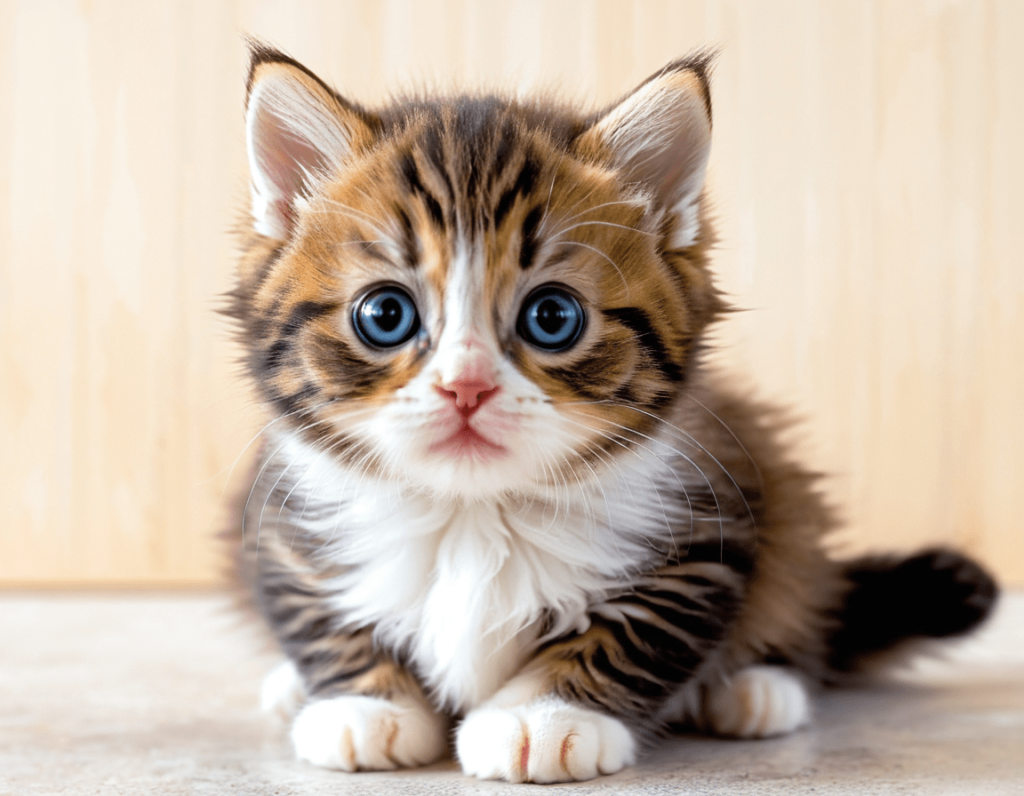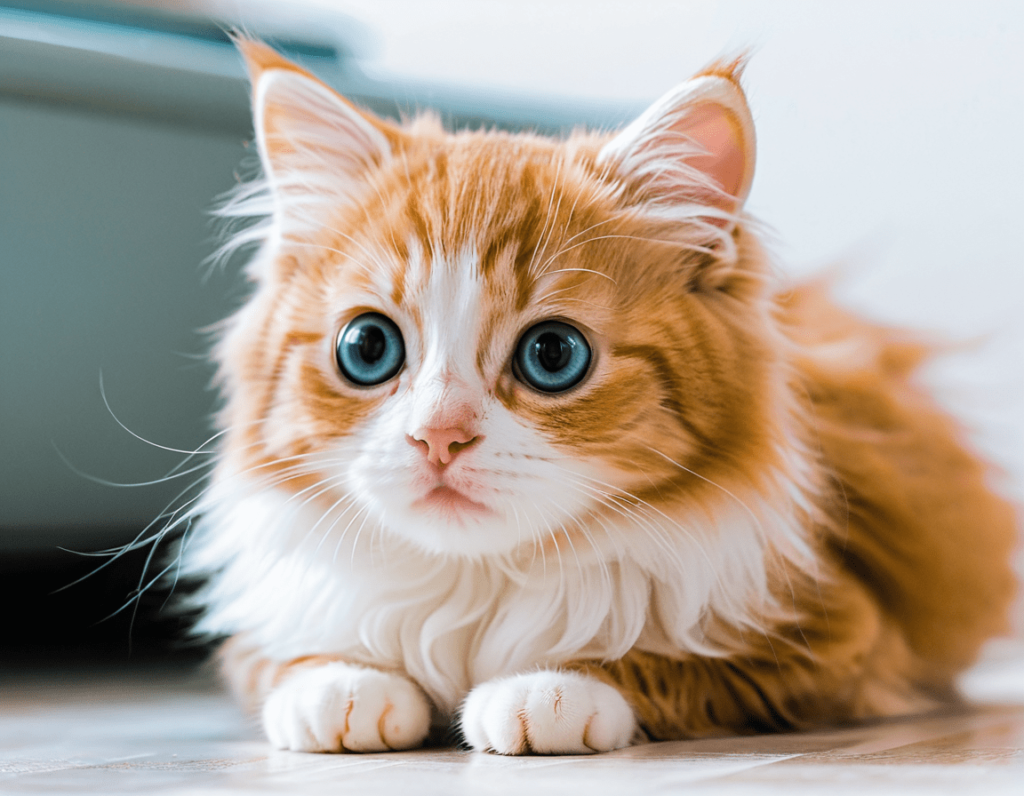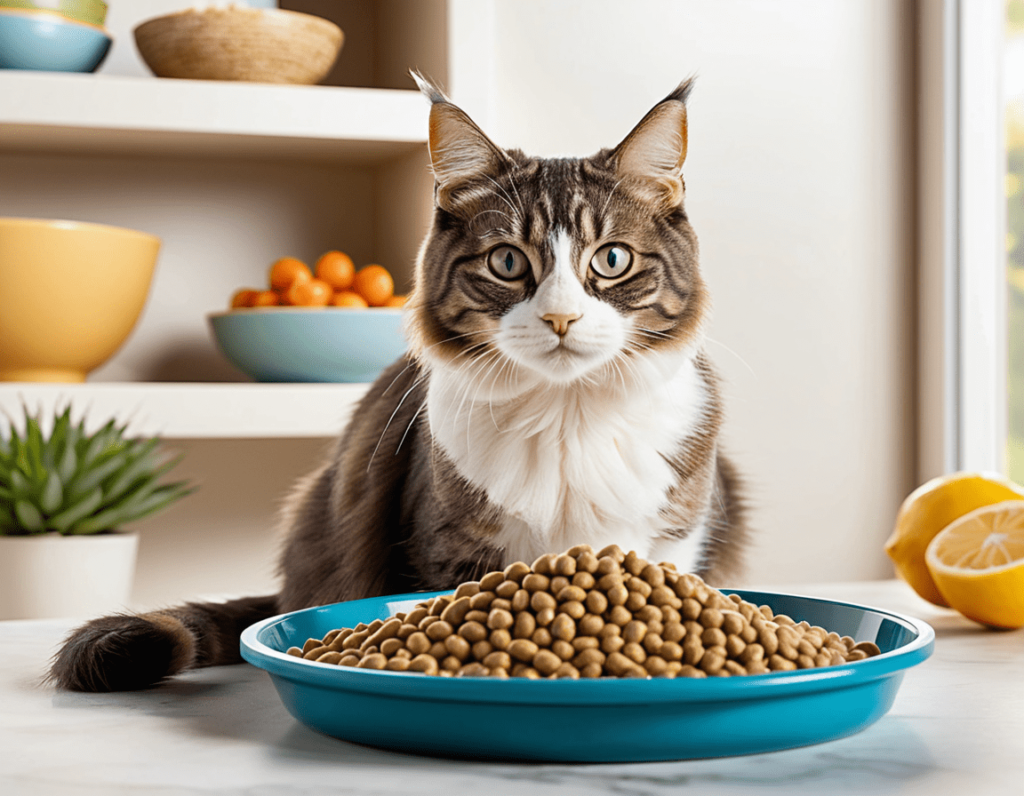
As a cat owner, one of the biggest debates you’ll face is whether to let your furry companion roam outside or keep them safely indoors. The indoor vs. outdoor cat dilemma is a common one among pet parents, and it comes with a variety of pros and cons. So, what’s the best option for your cat’s health and happiness? Well, let’s break it down in the most cat-friendly way possible—paws and all!
Indoor Cats: Safe and Sound (Most of the Time)
Keeping your cat indoors is often seen as the safest option, and for good reason. Here’s why:
1. Safety First!
The outside world can be full of dangers for cats. From cars zipping by to potential encounters with predators (we’re talking about those sneaky neighbor dogs and feral cats), the risks are pretty high. If your cat is indoors, they’re safe from traffic accidents, animal fights, and most importantly, being lost.
2. Better Health
Indoor cats are generally healthier. They’re less likely to pick up parasites like fleas, ticks, or worms that often come with outdoor adventures. Plus, they’re protected from diseases like feline leukemia and feline immunodeficiency virus, which are more commonly transmitted by outdoor cats.
3. Longer Lifespan
Indoor cats tend to live longer than their outdoor counterparts. A well-cared-for indoor cat can live anywhere from 12 to 20 years, while outdoor cats are at a higher risk of injury or disease, which can drastically shorten their lifespan.
4. Entertainment Galore!
Just because your cat is inside doesn’t mean they have to be bored. There are tons of toys and games to keep them entertained. From laser pointers that make them chase imaginary mice to puzzle feeders that make them work for treats, the possibilities for indoor play are endless. Plus, you get to watch them do that hilarious “zoomie” thing they do when they’re feeling frisky!
Outdoor Cats: The Wild Side of Feline Life
On the flip side, there are some definite perks to letting your cat live their best outdoor life. Here’s why some pet parents opt for an outdoor kitty:
1. More Space to Roam
Let’s face it, cats love to roam. Giving your cat the opportunity to explore the great outdoors is like giving them a ticket to their own personal wild kingdom. They can stalk, pounce, and hunt (even if it’s just a leaf), satisfying their natural instincts.
2. Exercise and Weight Control
If your indoor cat is a little on the fluffy side, you may want to consider giving them access to the outdoors. Outdoor cats tend to be more active, which helps them maintain a healthy weight. Plus, their daily walks (or runs, or sprints, or whatever they’re doing outside) provide ample exercise and mental stimulation.
3. Hunting Instincts Satisfied
Cats are natural hunters, and when they’re outdoors, they get to indulge in this instinct. While we might not love the occasional “gift” of a dead bird or mouse left on the doorstep, it’s their way of saying, “I love you!” or “I’ve earned my dinner!” Allowing your cat to experience the outdoors means they can engage in hunting behaviors that they would miss if they were indoors all the time.
4. Happy Cat, Happy Life
Many cat owners who let their pets roam outside swear that their cats seem happier and more relaxed. Cats are territorial creatures, and having access to a wider space means they can establish their territory and avoid the frustration of being cooped up indoors all day.

The Middle Ground: A Compromise
If you’re torn between the indoor and outdoor debate, you might want to consider a middle ground: supervised outdoor time. You can let your cat enjoy the outdoors while keeping them safe by:
1. Using a Leash and Harness
A leash and harness combo allows your cat to explore outside safely without running the risk of wandering too far. This is a great way to satisfy their curiosity while keeping them under your watchful eye. Some cats might take to it right away, while others might need a little training (and maybe a few treats to sweeten the deal).
2. Building a Catio
Ever heard of a catio? It’s like a cat’s personal balcony or mini jungle gym that allows them to enjoy the outdoors from the safety of a fully enclosed space. Think of it as a cat mansion where they can bask in the sun and watch the birds (without any chance of catching them). Catios can be as simple as a window perch or as elaborate as a full outdoor enclosure.
The Bottom Line: What’s Best for Your Cat?
Deciding whether to keep your cat indoors or let them roam outside is ultimately a personal choice that depends on your cat’s personality, your living situation, and your own preferences. Here are a few things to consider:
- Health concerns: If your cat has health issues or is older, it might be safer to keep them indoors.
- Risk factors: If you live in an area with heavy traffic or dangerous wildlife, indoor living is probably a better option.
- Personality: Some cats are perfectly content to lounge around inside, while others might be bursting with energy and need an outdoor outlet.
Tips for Transitioning an Outdoor Cat to Indoor Life
Deciding whether to keep your cat indoors or let them roam outside is ultimately a persa
If you’ve recently adopted a cat who’s used to living outdoors, you may face a bit of a challenge when it comes to keeping them indoors. Cats are creatures of habit, and a sudden shift in their routine might leave them a little… shall we say, grumpy. But don’t worry! With a few simple steps, you can help your outdoor cat adjust to their new, safer indoor life.
onal choice that depends on your cat’s personality, your living situation, and your own preferences. Here are a few things to consider:
- Health concerns: If your cat has health issues or is older, it might be safer to keep them indoors.
- Risk factors: If you live in an area with heavy traffic or dangerous wildlife, indoor living is probably a better option.
- Personality: Some cats are perfectly content to lounge around inside, while others might be bursting with energy and need an outdoor outlet.
1. Create a Stimulating Environment
Outdoor cats are used to a lot of space and excitement. To help your cat feel more at home indoors, you’ll need to provide plenty of things to do. Invest in some interactive toys that will get them moving—think lasers, feather wands, or puzzle feeders. A few cat trees for climbing and scratching will also do wonders. The more fun things you can offer, the less your cat will long for their outdoor adventures.
2. Introduce a Window Perch
If your outdoor cat is used to chasing birds or watching squirrels, a window perch can be a game-changer. Cats love to observe the outside world, and a comfy spot by the window gives them the chance to keep an eye on the action without risking a run-in with traffic or the neighbor’s dog. Bonus: you get the satisfaction of knowing they’re safe while still having fun!
3. Gradual Transition
If your cat is really determined to go outside, consider giving them a bit of outdoor access at first. You can start with supervised playtime in the yard or create a “safe zone” with a leash and harness. Over time, you can slowly increase the amount of indoor time they spend, until they’re content with being an indoor cat.
4. Provide a Litter Box in Every Room
When transitioning to an indoor life, your cat might be unsure about using a litter box (especially if they’ve been used to doing their business outside). To make the process easier, place multiple litter boxes around the house, especially in areas where your cat spends a lot of time. The key here is to make the transition as stress-free as possible. And, of course, always keep those boxes clean—because no one, human or feline, enjoys a dirty bathroom!
Signs Your Indoor Cat Might Want to Go Outside
Okay, so you’ve kept your cat indoors, and they seem happy. But what if you notice some behaviors that hint they’re ready for a little outdoor adventure? Here are a few signs your indoor cat might be feeling adventurous:
- Increased window watching: If your cat spends hours gazing out the window with longing eyes, they might be dreaming of their next outdoor escapade.
- Restlessness: An indoor cat that’s pacing, meowing, or knocking things off shelves might need a little more stimulation. Try adding extra playtime or consider a leash walk or outdoor enclosure to give them a taste of the great outdoors.
Trying to escape: Some indoor cats will go to great lengths to escape. If your cat is constantly trying to sneak out every time you open the door, it could be a sign they’re ready for outdoor access (under your supervision, of course!).
Conclusion: The Great Cat Debate
Whether you’re an indoor-only advocate or someone who’s ready to let your cat explore the world (on a leash, of course), the most important thing is to make sure your feline is safe, happy, and healthy. Cats, just like people, have different personalities, and what works for one might not work for another.
In the end, it’s all about balance. If your cat’s safety is your top priority, then keeping them indoors is the way to go. But if you’ve got a curious adventurer on your hands, offering them some supervised outdoor time or a cozy catio could be the perfect solution.
So, whether they’re lounging on the windowsill watching birds, or out in the yard chasing leaves (or maybe that one specific leaf that’s been there for days), your cat’s happiness will always be the most important thing. After all, as long as they’re being well-fed, loved, and entertained, they’ll probably be purring either way. 😸

FAQs About Indoor vs. Outdoor Cats
1. Is it better to keep my cats indoors or let them roam outside?
Answer: The choice between keeping your cat indoors or letting them roam outside depends on several factors like safety, your living environment, and your cat’s personality. Generally, indoor cats tend to live longer, healthier lives because they’re protected from outdoor dangers like cars, predators, diseases, and parasites. However, if your cat enjoys exploring and you can provide a safe outdoor space, like a catio or supervised walks, letting them explore can be beneficial for their mental and physical health.
2. Can outdoor cats live longer than indoor cats?
Answer: No, outdoor cats are generally at a higher risk for accidents, diseases, and injuries, which can shorten their lifespan. On average, indoor cats live longer because they are safer from these dangers. While outdoor cats might have more freedom, their risk factors increase significantly.
3. How can I make sure my indoor cat is happy?
Answer: You can keep your indoor cat happy by providing plenty of stimulation and entertainment. Cats need mental and physical engagement to prevent boredom. Consider cat trees, scratching posts, interactive toys, and puzzle feeders. You can also create a window perch for them to observe the outside world safely, and engage in daily play sessions to mimic their natural hunting behavior.
4. How do I transition an outdoor cat to being an indoor cat?
Answer: Transitioning an outdoor cat to indoor life requires patience and gradual steps. Start by creating a stimulating environment with toys, scratching posts, and plenty of vertical space to climb. If your cat is used to roaming outside, you can give them short supervised outings or create a catio (enclosed outdoor space) so they can enjoy the fresh air while staying safe.
5. Are there certain breeds better suited to being outdoor cats?
Answer: While every cat is an individual, certain active breeds like the Bengal, Abyssinian, and Maine Coon may enjoy outdoor activities more than others due to their high energy and natural curiosity. However, it’s important to remember that all cats, regardless of breed, face risks outdoors. Always consider your home environment and safety measures when deciding whether to let a cat roam outside.
6. What are the risks for outdoor cats?
Answer: Outdoor cats face a number of risks, including:
- Traffic accidents: Cars and vehicles are a major hazard.
- Predators: Dogs, wild animals, and other cats can pose dangers.
- Diseases: Cats can contract diseases like feline leukemia, feline immunodeficiency virus, and parasites.
- Injuries: Outdoor cats are more likely to get into fights or suffer accidents.
- Getting lost: Cats that wander too far may not find their way back home.

7. What’s a catio, and should I get one for my cat?
Answer: A catio is an enclosed outdoor space where your cat can safely enjoy the outdoors without the risks of roaming freely. Catios come in all shapes and sizes, from small balcony enclosures to large, elaborate structures in your yard. They allow your cat to satisfy their curiosity and enjoy the fresh air without the danger of traffic or predators.
8. Can my cat get bored indoors?
Answer: Yes, if your cat isn’t provided with enough mental and physical stimulation, they can get bored. Boredom can lead to undesirable behaviors like scratching furniture or excessive meowing. To prevent this, make sure to offer variety—cat trees, interactive toys, new scents, and even TV shows made specifically for cats!
9. Should I let my cat outside if I live in a rural area?
Answer: Even in rural areas, outdoor cats are still at risk. While there may be fewer cars, there could be other dangers like wildlife, predators, and diseases from other animals. It’s best to carefully consider the environment, or set up a secure outdoor space like a catio for your feline friend to enjoy the outdoors in a safe manner.
10. How can I make my indoor cat more active?
Answer: If your indoor cat isn’t getting enough exercise, try interactive play with toys like laser pointers, feather wands, or remote-controlled mice. You can also hide treats around the house to encourage hunting behavior. Another great way to promote activity is by providing a cat wheel (similar to a hamster wheel), which lets cats burn off energy indoors.Answer:
Final Thoughts
Whether you choose to let your cat roam outside or keep them as an indoor cat, the most important thing is ensuring they are happy and healthy. Some cats are perfectly content with the safety and comfort of the indoors, while others might thrive in the great outdoors (or even in a safe, supervised outdoor area). Just remember, a little love, care, and attention goes a long way, no matter where they’re hanging out.
And hey, if you’re ever feeling guilty about not letting your cat explore the world, just remember that in their eyes, the couch is their jungle, and the treat jar is their trophy! 😺


